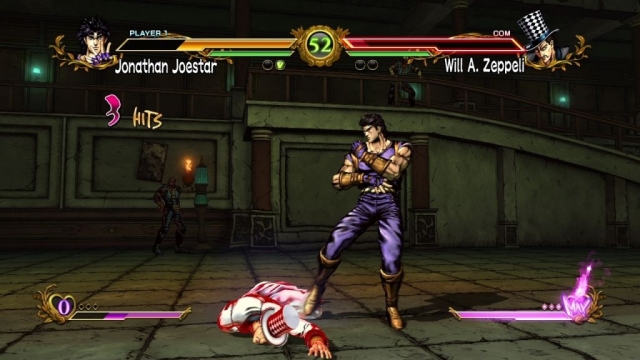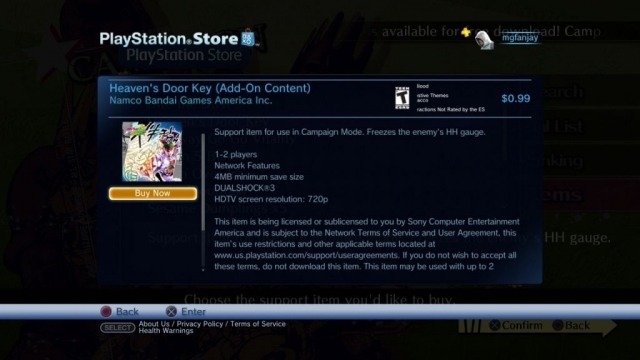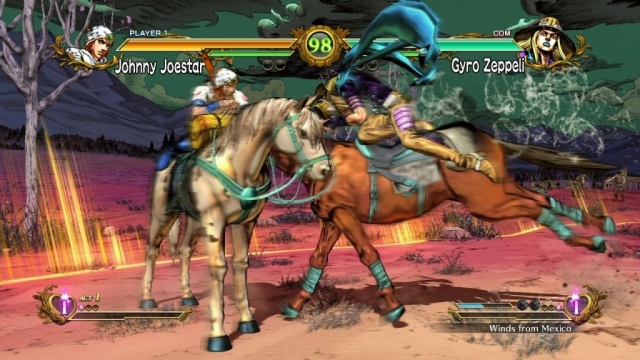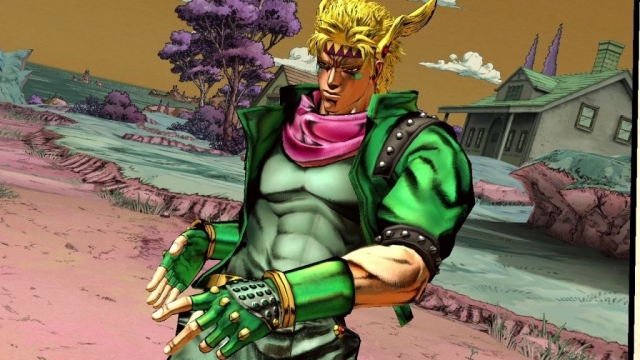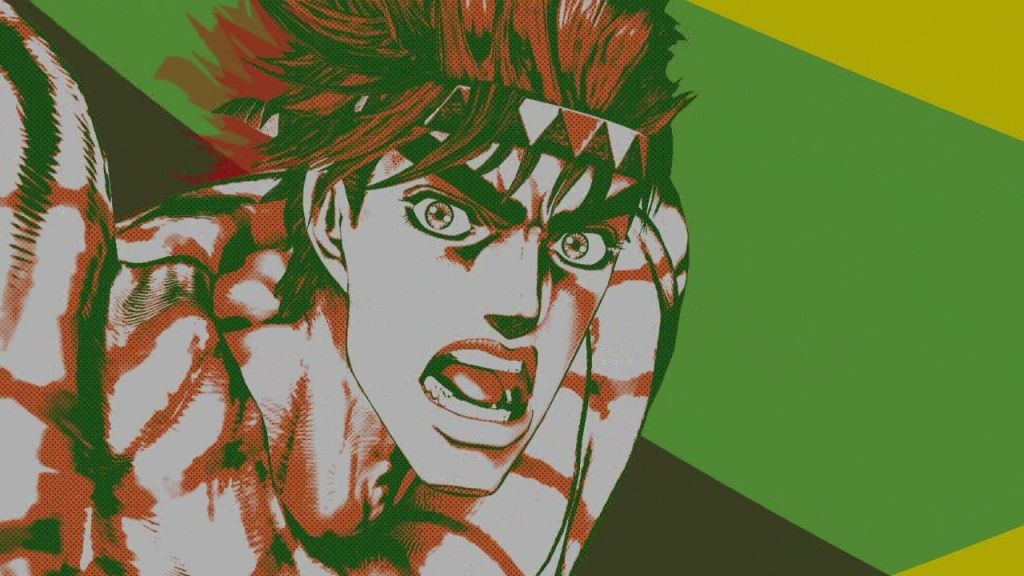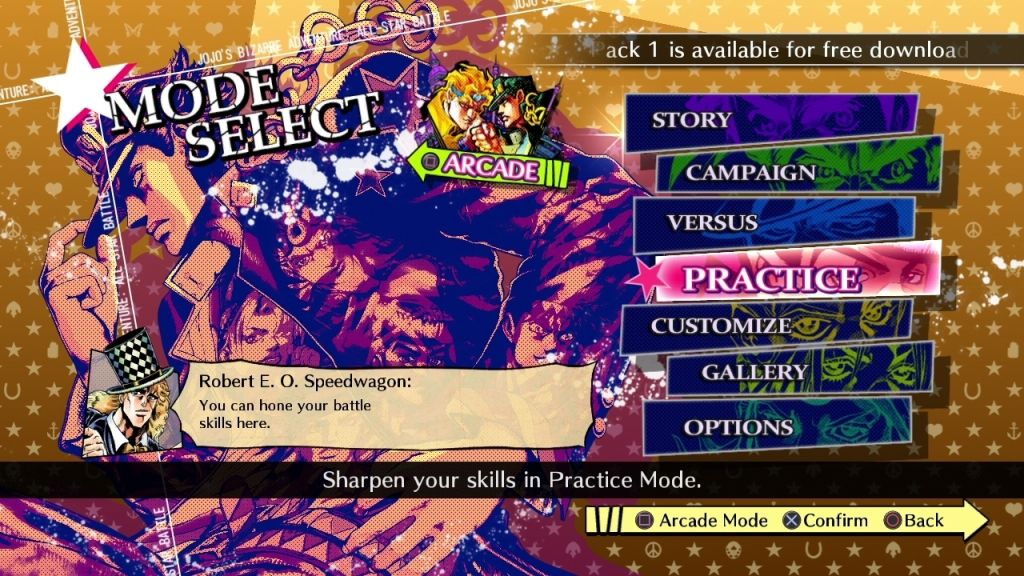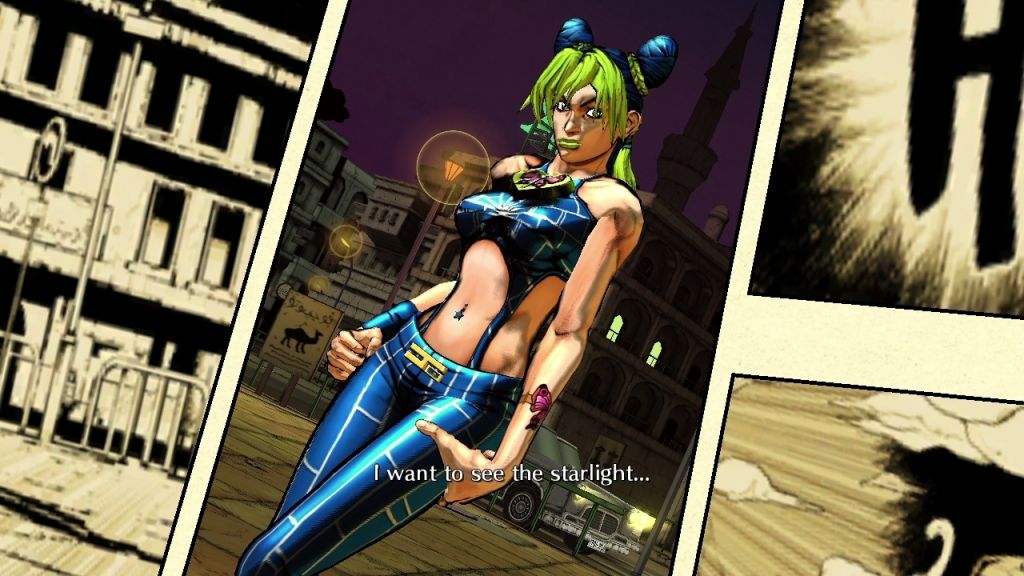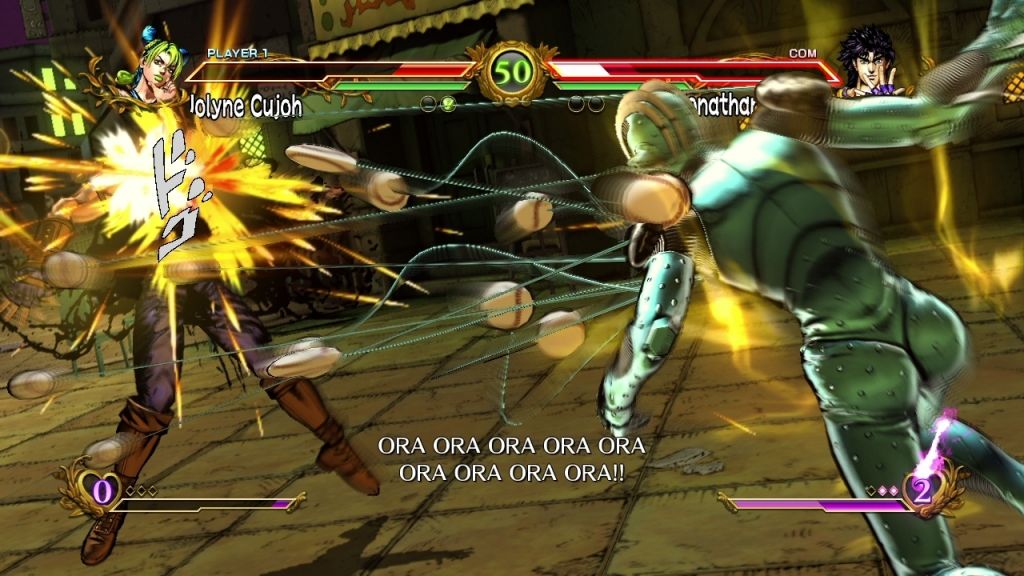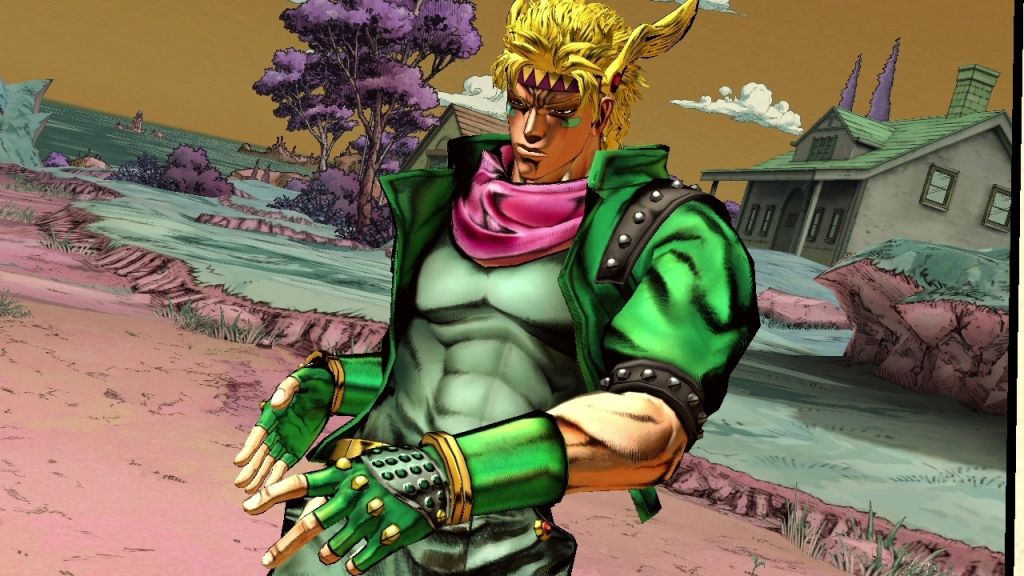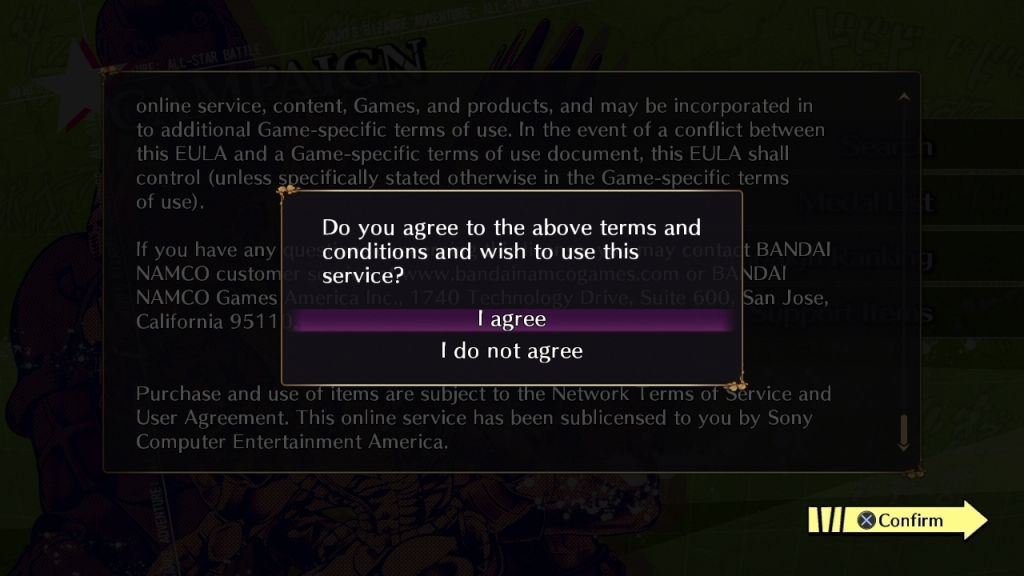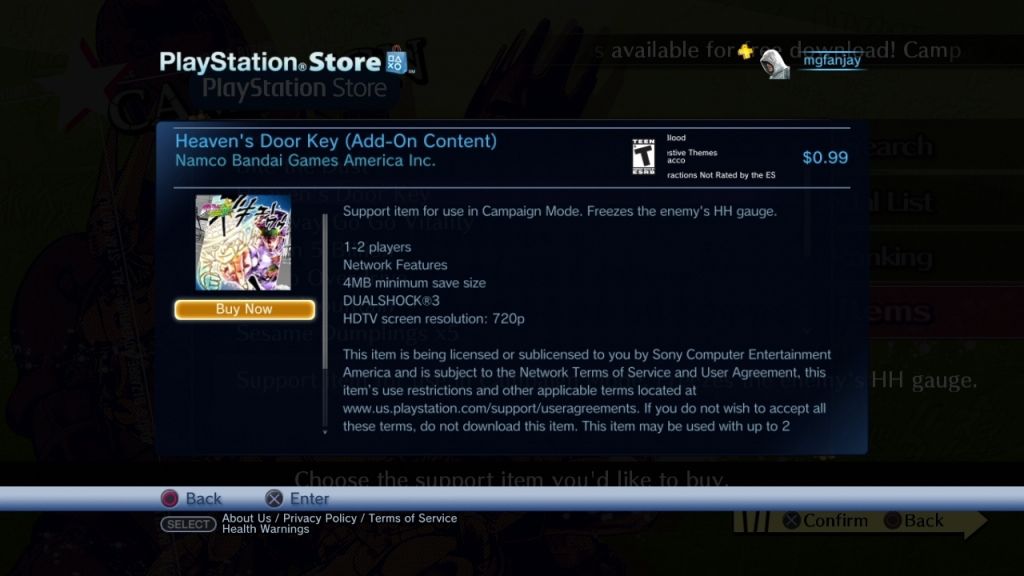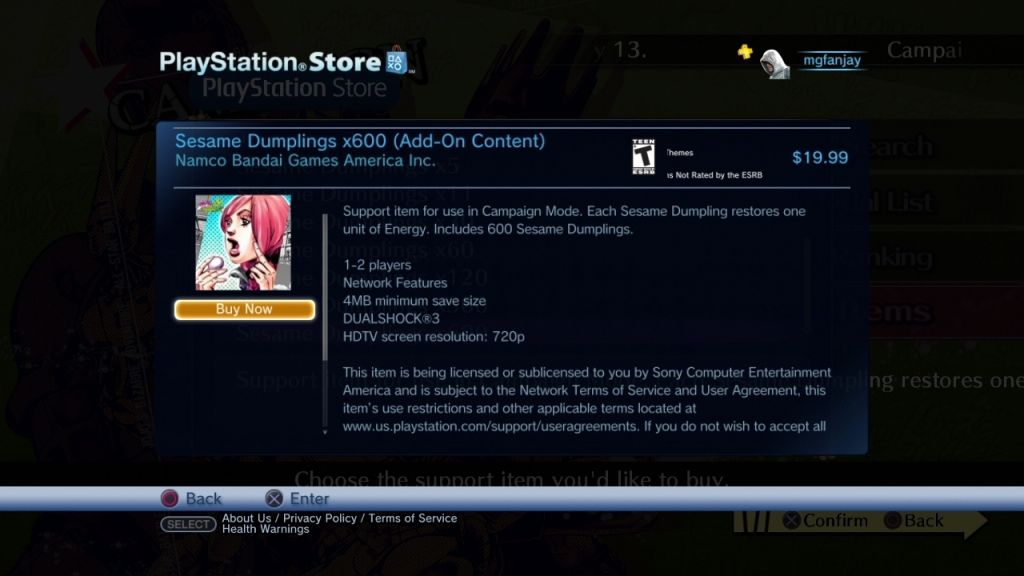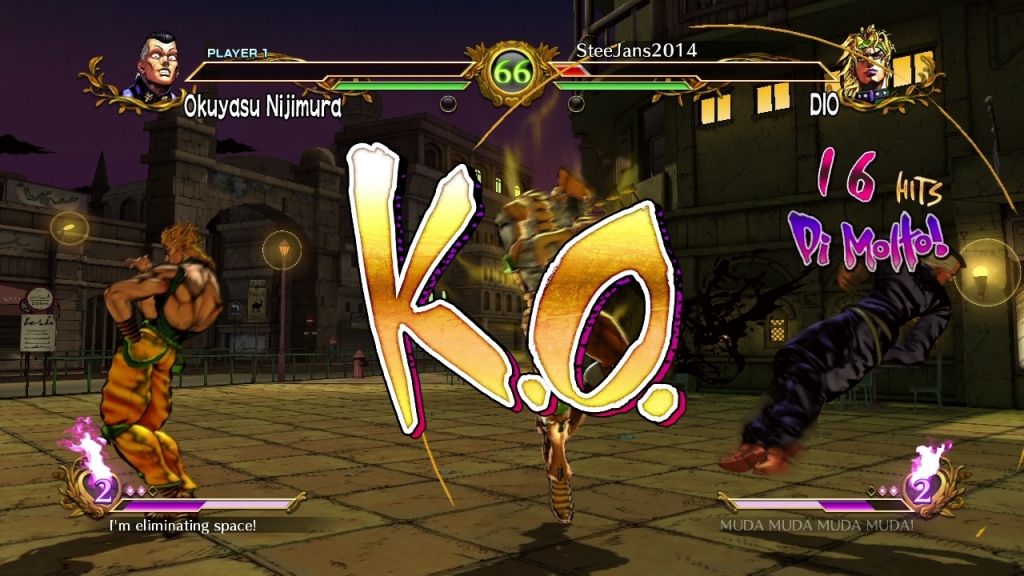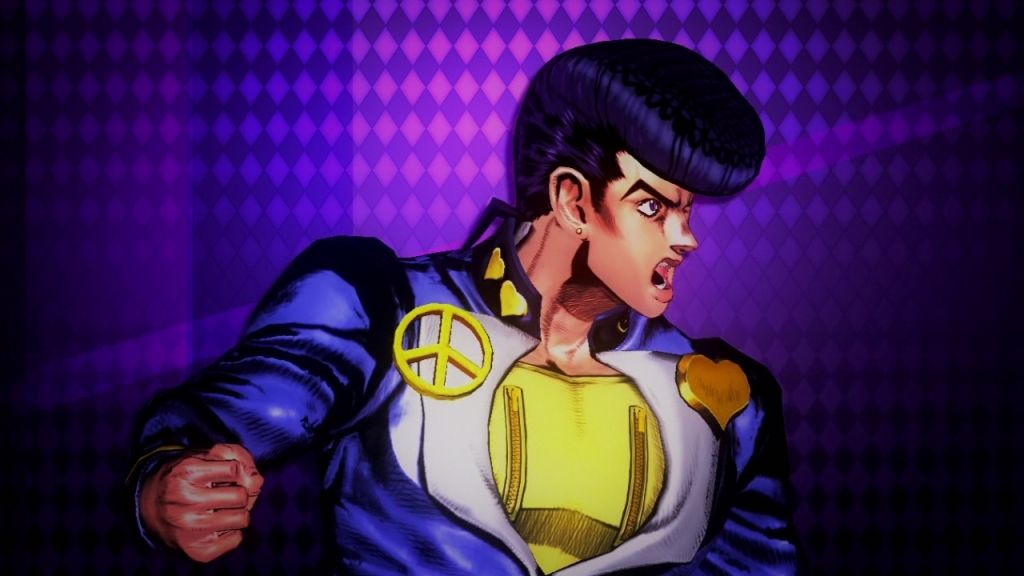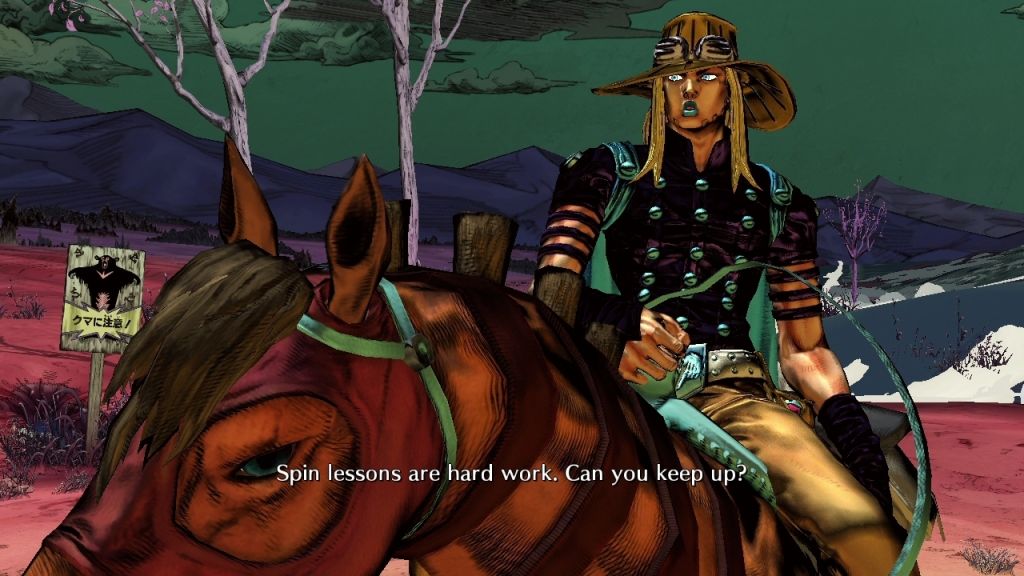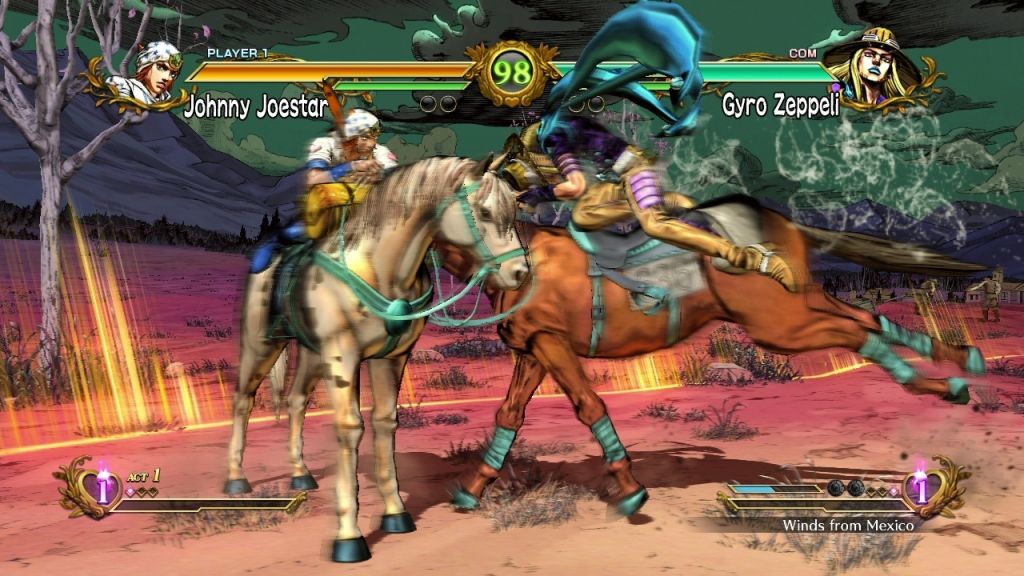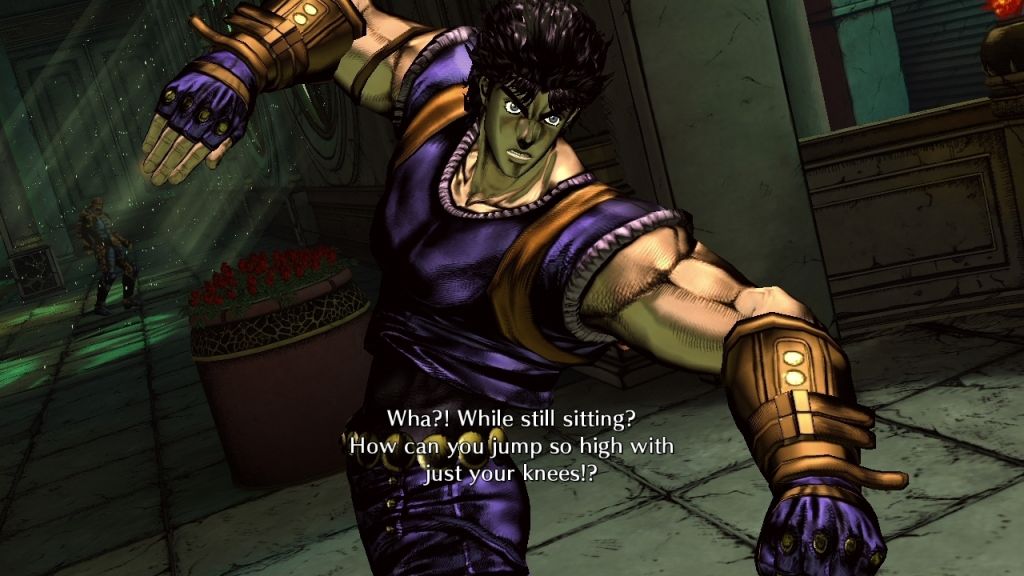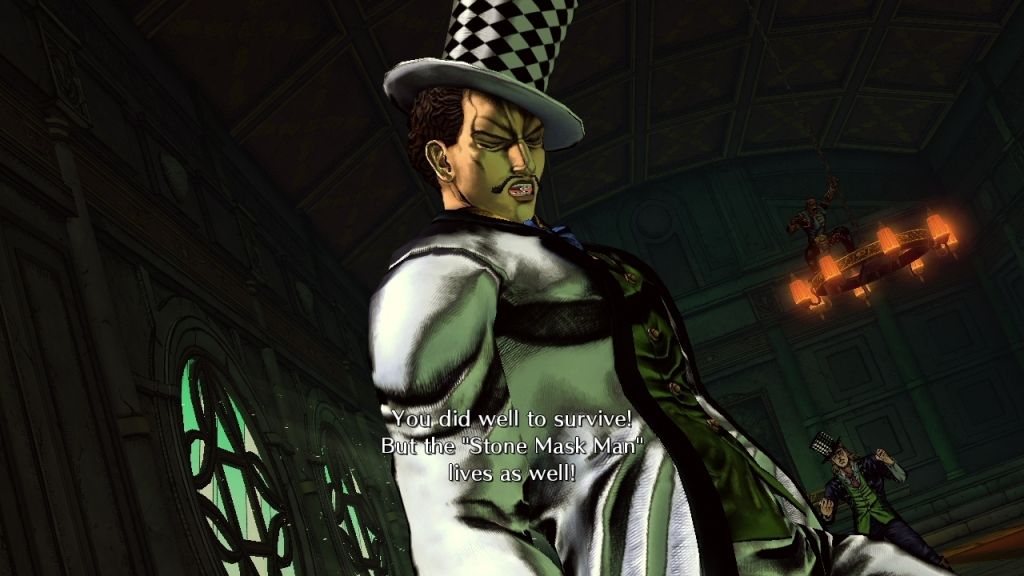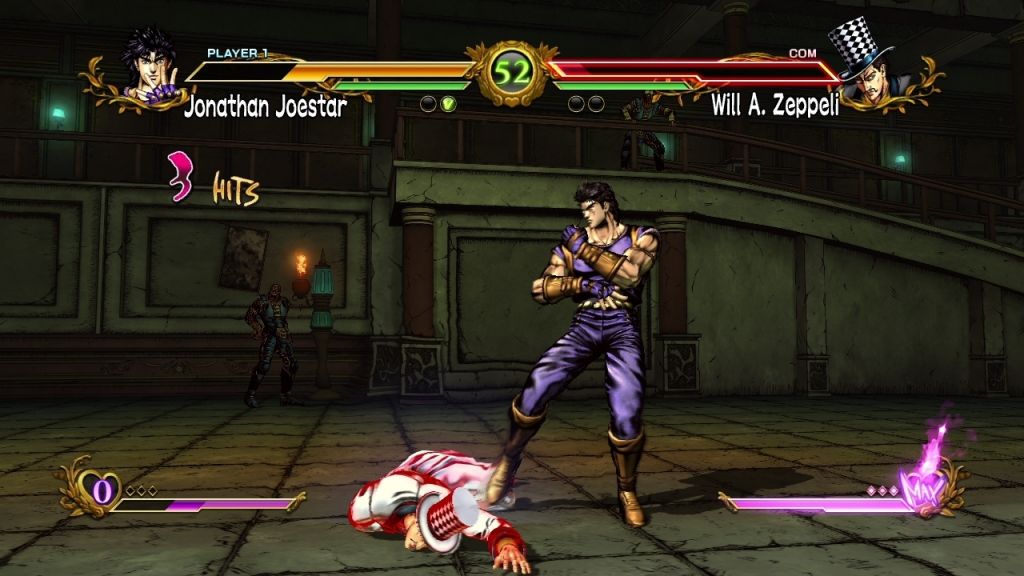JoJo’s Bizarre Adventure: All-Star Battle
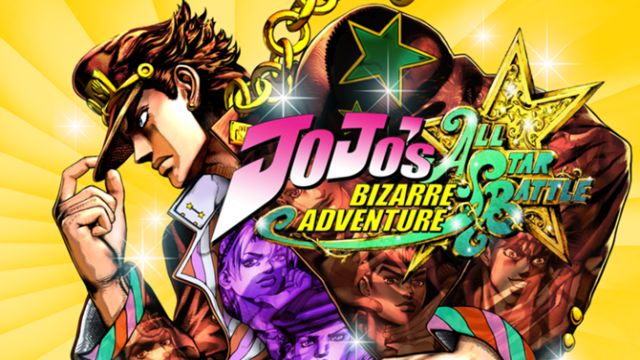
It’s amazing how much of a long-term benefit having your license properly handled can have. JoJo’s Bizarre Adventure was an unknown anime license before the Dreamcast game hit, but after that came out, it was well-known. Whatever it cost to have Capcom work on the game was well worth it because the brand got instant recognition and credibility because they were at one of their heights in 2D fighting games when it came out – and the desire for the game was so high it was re-released a couple of years ago digitally. Now, JoJo is back but with Bandai Namco publishing things and CyberConnect2 handling the development.
Going with a more modern Street Fighter IV-esque visual style fits the anime/manga series nicely, and keeping it as a side-scrolling fighter evokes memories of the Capcom classic. Sadly, this game’s engine just doesn’t quite measure up. The gameplay simply isn’t as smooth as you expect it to be from a modern-day fighter. There seems to be a tiny delay between your button press and the on-screen action, and the controls lack the high level of polish from JoJo’s prior fighting game. Comparing it to the Capcom original is a bit like comparing a 16-bit fighter from them to something made by Data East. Sure, it looks the same, but there’s a clear difference in the end result. This game does nail the “bizarre” part of the title perfectly though. There are a lot of assist character attacks that are strange, and involve things like tons of baseballs being thrown, or just being run over by a car.
One of the more amusing issues playing the game launch week was the campaign mode. It was originally unplayable due to the PSN store update not containing the DLC required to play it and the online mode as well. This wasn’t the end of the world though, as you could still play offline to hone your skills in the arcade mode. The content was finally up and what do you get upon starting the campaign mode? A giant EULA agreement! It’s like all the fun of buying a car – only a bit less expensive.
Well, actually, if you go nuts on micro-transactions, it could be more expensive. Yes, this game has micro-transactions. The campaign mode is a non-stop gauntlet of regular opponents and bosses, so to “help” you, you’re able to buy a variety of items from 50 cents and up to $20 to get through. This is a super-niche game. Fighting games are enough of a niche product in 2014, but one based on this license stands even less of a chance of selling really well (especially at $50). Now, beyond that high price ensuring that no one is going to blind buy this, you’ve got an additional payment model built in to get even more money out of people. There’s super-serving a niche and then there’s screwing them over – there’s a fine line between the two and All-Stars Battle comes dangerously close to doing the latter.
Fortunately, you are given some healing items for free – so they’re not completely out to nickel and dime you. The mere fact that this kind of stuff is available for purchase is a little disconcerting though. The gauntlet setup itself is a bit like the kumite mode in Virtua Fighter games. Each campaign involves fighting avatar fighters that are meant to give you more of a challenge than typical AI fighters. Now, while the name may imply a story, that’s actually saved for the…story mode. This thing begins in the most annoying way possible – putting you on horseback (yes, in a fighting game) and then training your life bar while your enemy’s refills. Oh, and if you’re knocked off the horse, you can’t stand back up and have to fight with non-working legs inching along the battlefield while your enemy can do whatever he wants.
Does this lead to you just being taught lessons? Does it involve a mandatory loss ala the first boss battle in Mega Man X? No – if you lose, you have to keep trying over and over again. This is by far the least fun I’ve ever had with a fighting game’s story mode. There’s super-challenging like F-Zero GX’s story mode, and then there’s pointlessly frustrating like this. There’s zero reason to even attempt to keep playing this mode in its logical part 1, part 2 and so on setup. However, if you want to rage quit one part, you can move on to another part without a penalty – so that’s a nice little feature to have and does allow to at least enjoy the mode even if it’s not all fun to play.
Online play is set up wonderfully. The menu system in the game is very clean, and I love the pre-match menus that explain everything. They essentially give you a quick refresher course in things and don’t get in the way of anything. Actually playing online is easy, with both ranked and unranked matches available. Lag was never much of an issue, although it did creep up from time to time. Amazingly, even with an on-screen prompt indicating a refresh, combat would still go on nearly perfectly. There would be a small hitch in the action, but nothing too jarring.
Visually, All-Stars Battle is gorgeous in screens – but that beauty fades a bit in motion. The crazy antics of the characters and their strange attacks look fine, but likely benefit from a lot of cutting away and screen-filling lights because basic attack animations are a bit stiff. They’re not altogether terrible – they just seem a bit stilted compared to really lush animation like you’d find in the SF IV games. For a 16-bit comparison, it’s a bit like comparing a Data East fighter to Street Fighter II. The animation is technically proficient, it’s just a bit lacking. As a result, there isn’t much oomph to the combat.
This game is more Japanese-heavy than one might expect, with all of the verbal stuff being in either Japanese or rough English. There’s a lot of passion behind the voices, and the subtitle text is easy to read. The high-energy voice work is fun to listen to, and the soundtrack is impressive. Given how many musical references there are with character names (that were altered for legal reasons, along with some attack names), it’s not too surprising. There’s a lot of fast rock to listen to, along with some easy-listening jazzier compositions and it’s all fun to hear while the game is playing. Given that I’ve found myself humming a few songs after extended play sessions, I’d reckon its OST would be a blast for a long walk or a workout.
Overall, I find JoJo’s Bizarre Adventure very hard to recommend for most people. If you’re buying it because you loved the Capcom classic and don’t really like the license, then avoid this game. The fighting itself isn’t anywhere near polished enough to compare to it, even if it gives you more stuff to do. Those who love the license might be willing to look past the issues, and I could see it being worth around $20-$30 as a game. For collectors, spending $50 on the physical version might be worthwhile since it will be in short supply and you might be able to double your money on the investment down the line. It’s a great-looking game in screens that is hurt by wonky animations, but it’s fun to hear, and amusing to simply behold. Fortunately it is available on Gamefly, and is an easy recommendation for a rental because it is perfect to screw around with for a little while.
Reviewed By: Jeremy Peeples
Publisher: Bandai Namco
Rating: 65%
——————————————————————————–
This review is based on a digital copy of JoJo’s Bizarre Adventure: All-Star Battle for the PlayStation 3 provided by Bandai Namco.
 Game Over Online
Game Over Online